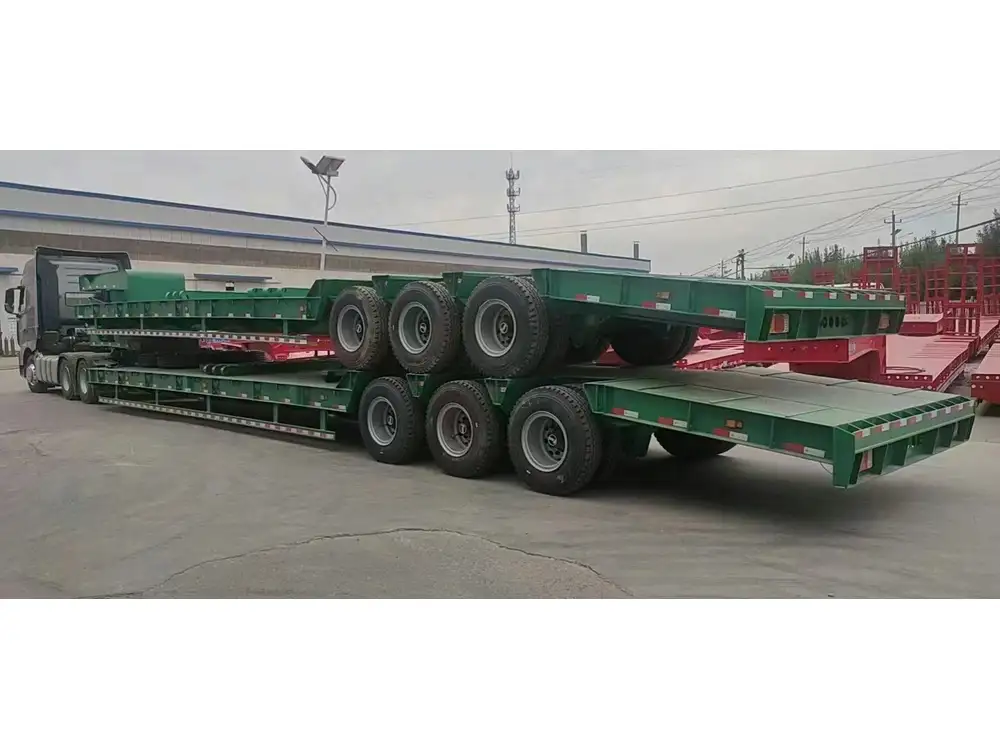The logistics and transportation industry relies heavily on semi tankers to carry vast quantities of liquid substances. As we navigate the intricacies of these critical vehicles, one fundamental question arises: How many gallons are in a semi tanker? In this article, we will dissect various factors that influence the capacity of these trailers, providing you with comprehensive insights to meet your operational and logistical needs.
1. Semi Tanker Specifications: Overview
Understanding the specifications of semi tankers is crucial in determining their liquid capacity. Here we outline the common types and their approximate gallon capacities.
| Type of Semi Tanker | Typical Capacity (Gallons) | Common Usage |
|---|---|---|
| Petroleum Tanker | 5,500 – 11,600 | Transporting crude oil and fuels |
| Food Grade Tanker | 5,000 – 7,000 | Transporting food oils and other consumables |
| Chemical Tanker | 6,000 – 13,000 | Transporting hazardous materials |
| Water Tanker | 5,000 – 8,000 | Transporting water for various uses |
These capacities may vary based on regional and regulatory specifications, design features, and the tanker’s purpose. Understanding these factors is essential for companies aiming to optimize their transport logistics.
2. Factors Affecting Capacity
Several variables influence how many gallons a semi tanker can carry. Here are the main factors to consider:

2.1 Type of Liquid
The type of liquid being transported significantly determines the design and capacity of a semi tanker. For instance:
- Petroleum Products: Often have larger capacity due to the demand for fuel transportation.
- Food and Beverages: These tankers typically require additional safety and sanitation measures, which can impact their design.
- Chemicals: Depending on the chemical’s corrosiveness and temperature requirements, the tanker may need specific materials and inner linings that affect capacity.
2.2 Trailer Design
The design of the trailer influences the volume it can hold. Factors include:
- Shape of the Tank: Spherical tanks can hold more liquid due to more efficient packing, while cylindrical designs are common in semi tankers.
- Insulation and Heating Systems: For certain liquids, especially in chemical transport, the need for heating or insulation impacts internal volume.
- Compartments: Multi-compartment tankers allow for transporting different liquids while maintaining separation, potentially reducing overall capacity.
2.3 Regulatory Considerations
International and local regulations can dictate certain specifications for semi tankers, affecting their maximum capacity:
- Safety Standards: Regulations often impose limits on tanker volumes depending on the liquid’s hazard level to ensure safe transportation.
- Weight Restrictions: Local and federal laws limit the weight that can be carried on public roads, which indirectly affects the perceived capacity when considering the weight of the tanker itself.

3. Capacity Calculations
To comprehend how many gallons fill a semi tanker, it is essential to delve into some rough calculations, taking into account the internal dimensions of the tanker.
3.1 Volume Calculation
The capacity in gallons can be approximated using the formula for the volume of a cylinder:
[ \text{Volume (in cu. ft)} = \pi \times r^2 \times h ]Where:
- ( r ) is the radius of the tank in feet.
- ( h ) is the height or length of the tank in feet.
To convert this volume to gallons, utilize the conversion factor that 1 cubic foot is approximately 7.48 gallons.
Example Calculation
Suppose we have a cylindrical semi tanker with:
- Diameter: 8 feet (Radius = 4 ft)
- Length: 40 feet
Using the formula:
[ \text{Volume} = \pi \times (4)^2 \times 40 \approx 5026 \text{ cu. ft} ]Then convert cubic feet to gallons:
[ 5026 \text{ cu. ft} \times 7.48 \text{ gallons/cu. ft} \approx 37,494 \text{ gallons} ]This example illustrates how one can accurately estimate the capacity of various semi-tankers based on their physical dimensions.

4. Common Applications of Semi Tankers
Understanding the applications of semi tankers provides further context on why capacity is vital for logistics in various industries.
4.1 Fuel Transport
In the realm of petroleum distribution, semi tankers are employed predominantly for transporting gasoline, diesel, and jet fuel. Their large capacities facilitate efficient delivery across vast networks of refueling stations, minimizing the number of trips needed.
4.2 Food Distribution
Food-grade semi tankers are essential in moving bulk edible oils, dairy products, and other consumables. Adhering to strict hygiene regulations ensures that the transported materials maintain their integrity and safety for consumers.

4.3 Chemical Distribution
Chemical semi tankers are specialized to handle hazardous materials, ensuring secure transport while adhering to compliance regulations. Their compartmentalized designs allow for carrying different chemical types, which is paramount in optimizing transport efficiency.
4.4 Water Transportation
In regions with limited access to clean water supplies, water tankers play a crucial role in delivering potable water to communities. Their capacities can provide significant support, especially in emergency scenarios.
5. The Impact of Capacity on Logistics
Understanding the gallons held in a semi tanker can drastically change the dynamics of logistics and supply chains. Here’s why:

5.1 Cost Efficiency
Maximizing the use of semi tankers means fewer trips and reduced overhead costs. For businesses, understanding the capacity allows for better planning and budget management, directly impacting the bottom line.
5.2 Environmental Considerations
Increased loads per trip mean less fuel consumption and lower emissions per unit of cargo. This enhancement in transport efficiency contributes to sustainability goals essential for modern businesses.
5.3 Timeline Optimization
Greater capacities enable companies to fulfill large orders more swiftly, improving customer satisfaction and trust in logistics providers. Ensuring timely deliveries is crucial in today’s fast-paced market.

6. Conclusion: Making Informed Decisions
In the ever-evolving logistics landscape, understanding the intricacies of semi tanker capacities, approximate gallon measurements, and the factors influencing these designs are paramount. Adapting to the needs based on the type of liquid transported, adhering to regulations, and considering costs while enhancing efficiency are all decisive factors for a successful logistics operation.
As we navigate the complexities of liquid transportation through semi tankers, companies must stay informed on the various aspects outlined in this guide. By leveraging these insights, businesses can optimize their transport solutions, ensuring both efficacy and reliability in the ever-demanding market.
With this knowledge, stakeholders in logistics can now make informed decisions, integrating the capacity of semi tankers into their strategic planning and execution as they look to streamline operations and meet their customers’ diverse needs efficiently.



